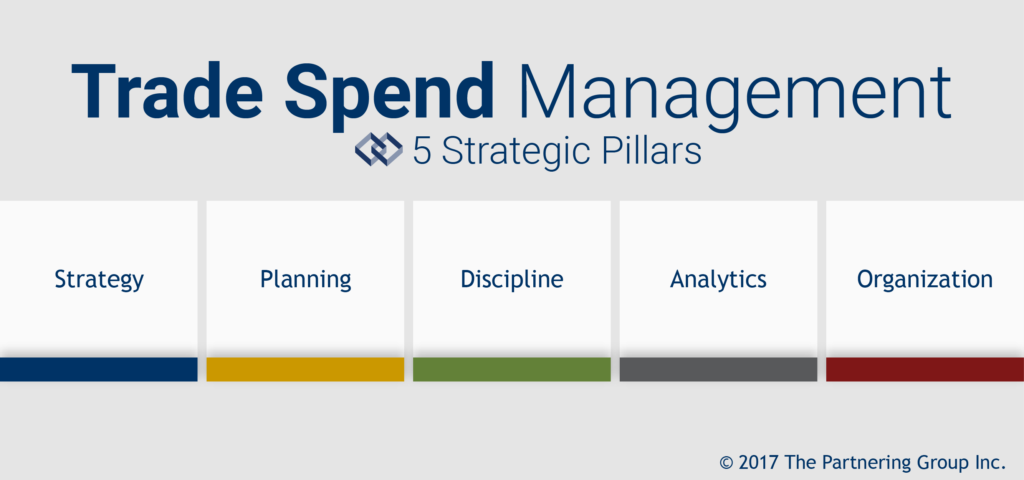- April 21, 2017
- Posted by: tpgstaging
- Category: Blog

By: Don Baker, Andy Buteux and John Wildman
DOES YOUR ORGANIZATION have an effective trade investment strategy? Given Trade’s sizeable impact on the P&L, most would answer, “Of course we do.” Then we ask to see the proof.
If we were talking about effective planning around activities related to Cost of Goods Sold, we’d expect to be shown plant layouts, line configurations, proposed formula changes, increasing throughput, eliminating waste, and detailed distribution planning.
However, it’s quite uncommon to see either the underpinnings or the application of such thinking behind the Trade line. Sure, there are data and PowerPoint presentations. But many of the facts don’t lead to conclusions; and many disparate insights don’t lead to changes in direction.
What would constitute an excellent strategy? For starters, collaboration between the P&L owner, marketing, sales and the trade marketing team on five strategic elements. These are simple in concept but challenging to implement in daily management:
- Solid Portfolio Plans
- Customer Segmentation with Channel Focus
- Price Architecture
- Supply Chain Impact on trade
- Fund Design
Each of these elements enables the overall plan and allows a company to invest in the face of ever-increasing competitive pressure and customer concentration.
Portfolio Plan. A clear Brand and Category investment strategy must outline the growth of the company’s brands. Just as importantly, and it should also outline expectations for the category. Brands should be valued across the company portfolio.
Customer Segmentation with Channel Focus. This discipline should be in place and actually used to drive decisions. Many companies take an academic approach to this exercise, which can mean no one understands how the outcome became the outcome. It is crucial to maintain a living document that represents today’s reality with tomorrow’s plan for customers. Segmentation should be used to identify the winners and also those in the “on deck circle” who are performing well but are underdeveloped.
Price Architecture. An everyday price and promotion strategy should articulate the value of the Brand/Segments/Items within the category. This document should house clear price/promotion guidelines for your own items as well as gaps and key price thresholds with respect to competitive items.
Supply Chain Impact. Many companies proficiently purchase commodities for COGS targets, but few deal with cost variances effectively. Organizations forecast finished goods and react, but many don’t monitor raw to finished good forecasting from a pricing and material availability perspective. So a broader plan for monitoring COGS variances and trade investment together is a critical practice.
Fund Design. Funding strategy is the key expression of how the first 4 elements are brought to marketplace. What performance-based funds are required to deliver your business objectives based on your brand’s key business drivers?
This list may seem fairly straightforward, but there are many hands are in the cookie jar! Not to mention the many silos among the constituents. Now is a good moment to take stock: How do the Trade Investment Strategic Pillars look at your company?
_________
Authors’ Note: This article is the first of a TPG series on Trade Management Excellence. We will continue to build out these ideas in future blogs. Next up – OGSI: Building the Strategic Trade Investment Roadmap. Stay tuned!
© 2017 The Partnering Group, Inc.

